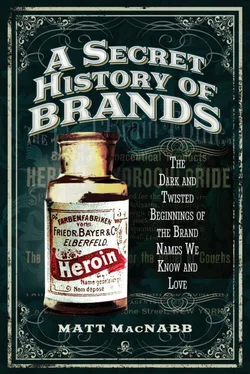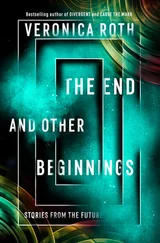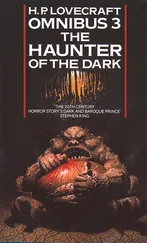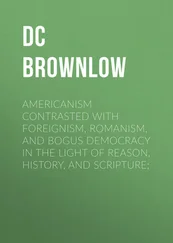This is an important success for environmental organisations from all over the world who have fought against these deadly pesticides for decades. But we must not forget that Bayer broke their original promise to withdraw all class I products by the year 2000. Many lives could have been saved. It is embarrassing that the company only stopped sales because the profit margins of these chemical time bombs have fallen so much.
The release by the CBG Network also noted:
Bayer has a world market share in pesticides of 20%. The WHO estimates the number of people who are poisoned by pesticides at three to 25 million per year. At least 40,000 people are killed accidentally by pesticides and the estimated number of unreported cases is much higher. Bayer products contribute enormously to the millions of poisonings each year.
Bayer has also experienced issues with their various medications being found as a danger, such as the once popular birth control medicine Yaz/Yasmin. The pill was found to contain drospirenone, which significantly elevates the risk of embolism or thrombosis in those who take it. The Bayer Pharma AG product Xarelto has also come under fire. The CBG Network discussed the dangers of the drug in 2012: Concerns regarding the safety of the anticoagulant Xarelto have not been dispelled. Trials carried out with the drug have resulted in a number of fatalities. Dubious practices are also being used to market the product. There are justified fears that a high-risk, over-expensive product with no additional therapeutic benefit is being forced onto the market. The BAYER Board of Management bears responsibility for this.
Christiane Schnura from the Coalition against BAYER Dangers:
The numerous reports of vascular occlusion, bleeding, cardiovascular problems and liver damage make it inadvisable to use Xarelto on a wide scale for the prevention of stroke. Products that do not offer any advantage compared with older products should on principle not be given regulatory approval.
Xarelto was recalled temporarily in 2014 due to an issue with contamination and many lawsuits are still in the court system over the dangers of the drug.
The continued denial of any dark past by Bayer was also highlighted by the CBG Network in 2013:
On August 1, 1863 businessman Friedrich Bayer and dyer Johann Friedrich Weskott founded the company ‘Friedr. Bayer et comp’. They initially produced synthetic dyestuffs but the range of products grew significantly over the years. In 1881, BAYER was made a joint stock corporation and developed into an international chemical company. In 1925 the firm became part of the IG FARBEN conglomerate.
For its 150th anniversary BAYER organised numerous celebrations. More than 1,000 guests attended an event in Cologne, including German Chancellor Angela Merkel and North Rhine-Westphalian State Premier Hannelore Kraft. A specially built airship is promoted the company on all five continents. However, the unpleasant periods of the company’s history were totally omitted from the celebrations. Topics such as environmental contamination, pesticide poisoning, worker protests and collaboration with the Third Reich were simply ignored.
Philipp Mimkes from the Coalition against BAYER Dangers said:
Being a part of the infamous IG Farben, BAYER was involved in the cruellest crimes in human history. A subsidiary supplied Zyklon B for the gas chambers. The company built a giant new factory directly at Auschwitz. To accommodate the slave workers, the corporation operated its own concentration camp. More than 30,000 labourers were worked to death. The company’s commitment to supply fuel, munitions and rubber was vital for Hitler to wage international war.
Chapter Seven
Kellogg’s: Corn Flakes and the War On Sex
Nineteenth century ideas about living ‘the good life’ once involved an inordinate amount of consumption and excess, and with that inevitably came poor health. This trend meant that health concerns were a huge part of the developing world near the end of the nineteenth century. It is difficult to imagine the terror that must have come with most illness in the era before vaccines and modern medicine. There was a widespread distrust of doctors in that time, and who could blame them? The practice of medicine was often as, or even more, barbaric and painful than the diseases that could ail you. We often hear people talking about ‘quack-medicine’ nowadays in a novelty sense, but looking back, pretty much all medical practice in the past has the appearance of quack medicine.
It was from this era of decadence that a need was born for a healthier way of living. There were several visionaries in the forefront of this movement, but few as famous, or rather infamous, as Dr John Harvey Kellogg. John Harvey and his younger brother, Will Keith, put their collective minds together to create a healthy food substitute, a cereal flake that would someday become known as Corn Flakes. The role of this rather plain dietary flake was to help one live a pure and healthy existence, but the history that surrounds it is anything but bland. The man behind the most famous breakfast cereal in America was also ardently in support of abstinence from masturbation, sexual arousal and sexual intercourse of any kind. He was also a ecumenist and a racial purist. The breakfast cereal revolution was about to begin and the two Kellogg brothers would be divided forever by the opposing forces of fanaticism and greed over a distinctly American breakfast icon.
The Early Life of John Harvey Kellogg
A young John Harvey Kellogg was the fifth son of humble Michigan frontier parents, John Preston and Anne Kellogg. Times were hard, but the Kellogg family kept their faith in God while they struggled to find their way. John was born on 26 February 1852 in Tyrone Township, a small Michigan rural community. John was a rather sickly child, being stricken by tuberculosis, which was often a death sentence in those days. The prolific disease wouldn’t have a vaccine until 1921 and wouldn’t be utilised on a wide scale until the 1950s. The stifling disease would keep John Harvey out of school until he was 9 years of age.
There is a story that is often re-told about John witnessing a boyhood friend being bled on a table right in front of him. John Harvey was so disturbed by the sight of the boy’s blood, he exclaimed to his mother that he when he grew up, he wanted to be anything but a doctor. The statement is almost ironic; John Harvey Kellogg was not a doctor in the same way as the ‘professionals’ who had fumbled through medicine before him. No, John Harvey would be a whole new type of doctor, practising what was, for that time, a revolutionary new way of thinking; one he would personally help pioneer and make famous.
The Kelloggs eventually moved to Battle Creek, Michigan, where his father, without much enthusiasm, began the task of manufacturing brooms, a venture that proved to be a more successful avenue for the family. The Kellogg boys would soon join their father at work in the broom factory. Not everyone in those days, just as it is now, was cut out for the physical labour and long hours of factory work. It was during this time as a teenager that John Harvey realised he was not cut out for a life of manual labour. John, who had spent much of his youth in a frail state, was far more of a reader and preferred delving into a good book to working with his hands. His aspirations inspired him to become a school teacher, a perfectly noble and viable profession of the era, but one he would never pursue.
Instead, John found himself on the path to addressing and treating matters of health and wellbeing. It was religion that brought this new path into Kellogg’s life. The Kellogg family, as it turns out, had become devout followers of the Seventh Day Adventist church, a new religion that had branched off from the Millerism movement. The followers of Millerism were still struggling to reform and find their way after the very specific ‘second coming of Jesus’ event, which their leader had pivoted their beliefs on, never took place. The event, referred as the ‘Great Disappointment’ was supposed to have taken place on 22 October 1844.
Читать дальше












